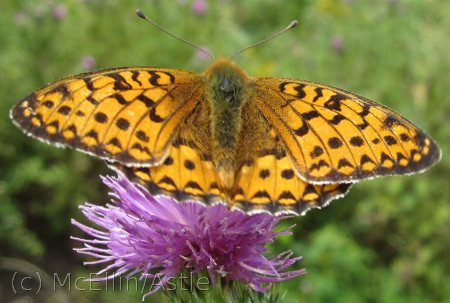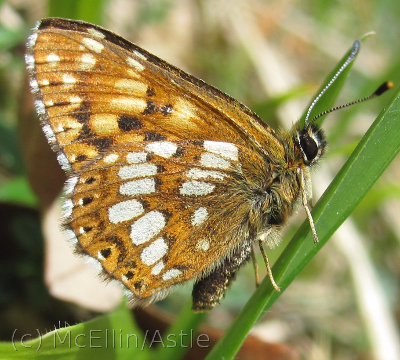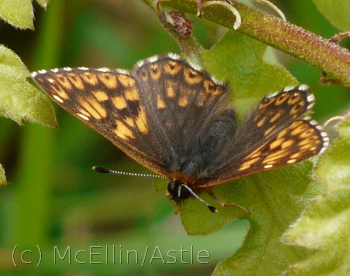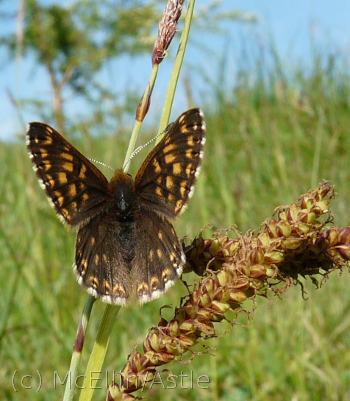On this page we aim to show examples of butterflies you will actually be able to see on our local commons or on visits to nearby nature reserves - if you keep your eyes open. Some are relatively common, others much less so, but all the photographs displayed below have been captured locally. Unimproved chalk grassland is getting to be a rarish habitat nationally, but it does tend to produce a rich mix of wildflowers, and that supports a good variety of butterflies, including some that are no longer easy to find on more intensively farmed land.
Most of the photographs were taken on Minchinhampton, Bownham or on Rodborough Common - all within walking distance of Minchinhampton itself. However, we do not exclude advertising a few interesting inhabitants of one the nearby nature reserves (e.g. Daneway Banks, Siccaridge Wood or Strawberry Banks - as noted in the text).
None of the photographs required particularly sophisticated equipment: many were taken with an ordinary and now rather old compact camera (Canon IXUS 100/Powershot SD780), some with an iPhone, and it is mainly my wife Mary who has the most patience. We often find that the best time for photography is early on a sunny day, when the butterflies still need to warm up to become active. Then it is just a matter of very slowly creeping up on a butterfly, taking shots as you close in, sometimes until the lens is no more than a couple of centimeters away. A bit later on they get too lively and fly away before you get near. Mating butterflies are always a good bet - they definitely have their little minds on other things!
Frequently the butterfly gets nervous and moves off - or the auto-focus picks the wrong target. So we do have to dispose of a lot of photos of blurred grass stems - or blurred butterflies and wonderfully sharp grass stems - but we always carry the compacts with us even on the most casual short walks. The best camera for butterfly photography is always the one you actually have with you when you see a photo opportunity and for every ten duds you might get one wonderful shot. I am sure the same tricks would work with a smart-phone camera.
If you wish to know more about any butterfly, or access a wide selection of photographs to aid identification, go to http://www.ukbutterflies.co.uk/.
Blues, Coppers and Hairstreaks (Lycanidae)
Adonis Blue Polyommatus bellargus
|
Photographs hardly do justice to the startling blue of the male Adonis. (If you are doubtful of the identification it probably isn't one.) Also look for the black lines on the rear of the wings. The female is a rich chocolate brown on the upper wing surface. The lower wings are more similar, with the female somewhat browner. The Adonis has two broods each year, and can be seen on sunny banks in June and August/early September. According to Dr Anne Goodenough, an ecologist at University of Gloucestershire, this is one of the species that is likely to benefit from climate change, with its range (previously confined to the most southern grassland gradually extending northwards. |
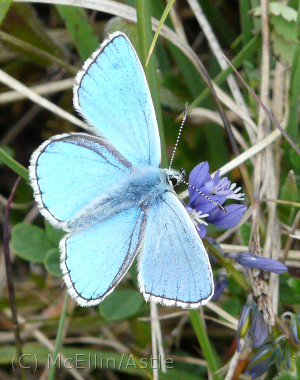 |
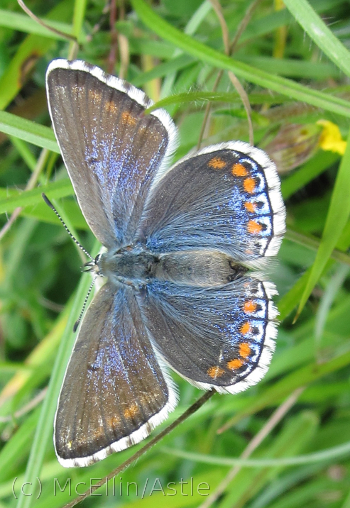 |
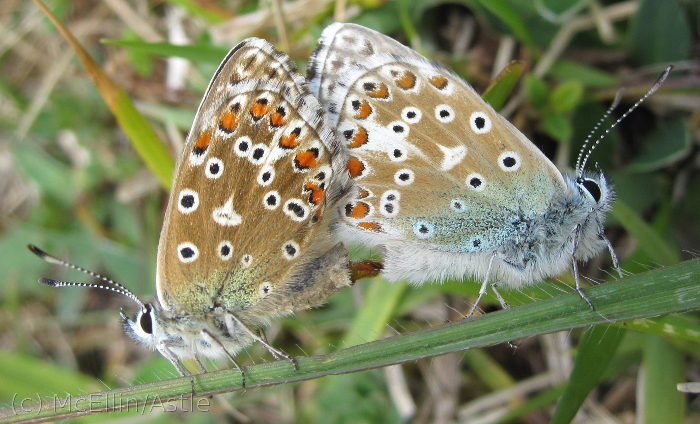 |
||
Brown Argus Arisia Agestis
| Photographed on Rodborough Common - clearly related to the "Blues" in spite of its name. | 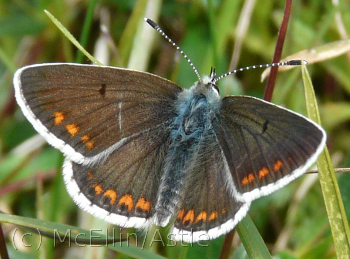 |
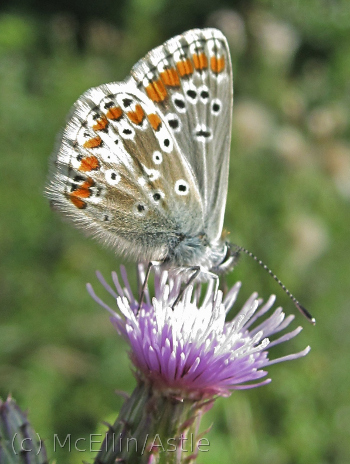 |
Chalk Hill Blue Polyommatus coridon
| Note the dark gray edge to the upper wing surface. | 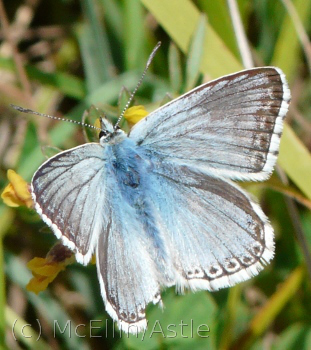 |
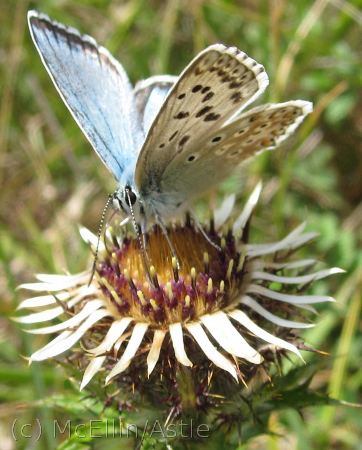 |
Common Blue Polyommatus icarus
| People sometimes mistake this for the Adonis, until the first time they see a real Adonis, but the blue is much less intense. Nor does it have the clear black lines along the edge of the wings. | 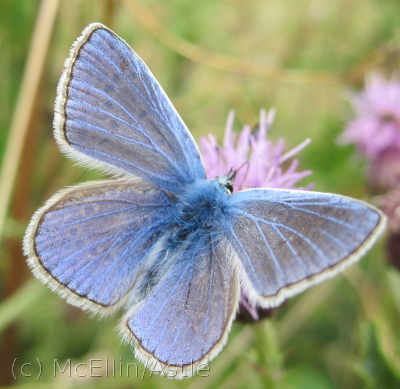 |
Holly Blue Celastrina argiolus
|
This was photographed locally. My wife has, however, only every managed to get a camera close to one example, and not so close at that. The Female can be distinguished from other Blues by the wide dark band on the upper side of the wing. You probably need to see the wing underside to distinguish the male from other blues. It has a rather restrained pattern of dark dots on a blue background. (See this website for more photographs.) |
 |
Large Blue Maculinea arion
|
This example of the Large Blue was photographed at Daneway Banks, where the species has been re-introduced. Large Blues have a life cycle that depends on the larva feeding on a single species of red ant. The larva lives in the anthills. You will not see it anywhere except those special locations which have an abundance of anthills of the right species - so have a trip to Daneway during late May to early July - but don't expect to be alone: people come from far and wide just to see this rarity. |
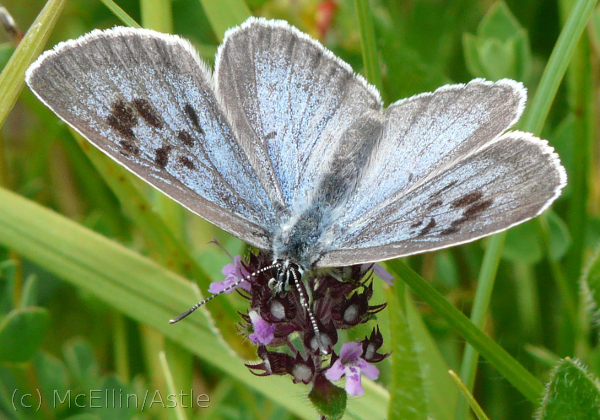 |
Small Blue Cupido minimus
| This was photographed on Rodborough Common, though most of our photographic encounters with this small butterfly have been at Daneway Banks. |  |
Green Hairstreak Callophrys rubi
| Fairly common, and visible in May/June. |
|
Small Copper
| This was photographed in a Minchinhampton Garden | 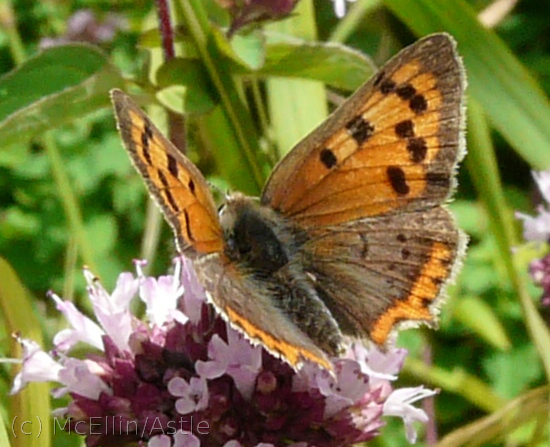 |
Browns, Fritillaries (Nymphalidae)
Browns
Gatekeeper Pyronia tithonus
| These were photographed on Bownham Common |  |
Meadow Brown Maniola jurtina
| A common butterfly of the summer months. | 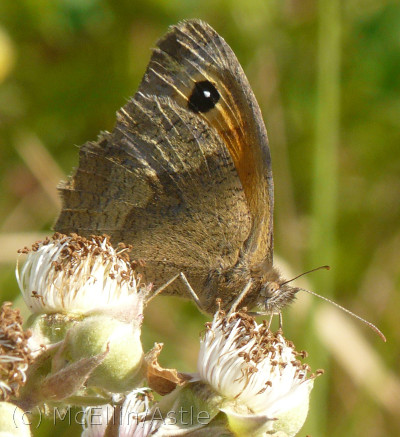 |
Ringlet Aphantopus hyperantus
| Look for these at the end of June or early July. They are more likely found in shaded areas (such as the shrubs round the edge of the Commons) rather than in full sun. | 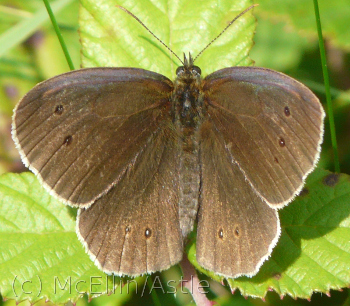 |
Small Heath Coenonympha pamphilus
 |
Speckled Wood Pararge aegeria
| As the name suggests you would expect to see this in woodland, but it can be found where ever there is suitable shade. (This was photographed on Minchinhampton Common.) It has a complicated life cycle, with up to three broods a year in suitable conditions (and therefore potentially visible from April through to September) and both the pupa and the larva can overwinter. | 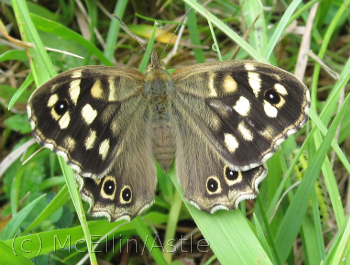 |
Marbled White Melanargia galathea
| Despite its name this is related to the "Browns". This specimen of the Marbled White was photographed on Bownham Common. Peak time for observation is July, but it can be seen from the middle of June through to the beginning of August. | 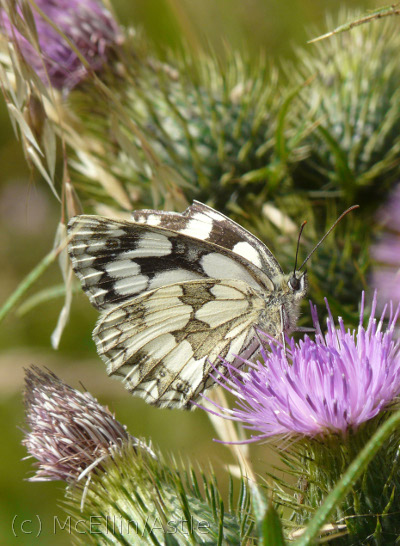 |
Fritillaries
Dark Green Fritillary Argynnis aglaja
| Photographed on Rodborough Common. The name comes from the distinct green hue on the underside of the wings which also show silver spots. However, all our photographs seems to have captured the butterfly with wings wide open. |
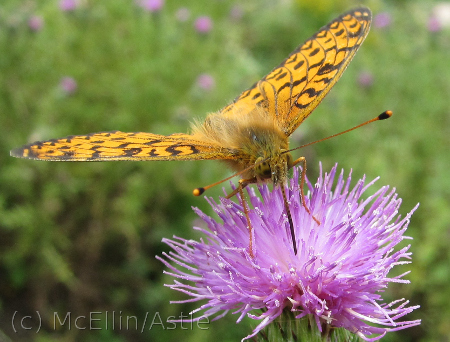 |
|
|
Other Nymphalidae
Painted Lady Vanessa cardui
| Most likely seen mid to late Summer when it migrates in from the Continent. | 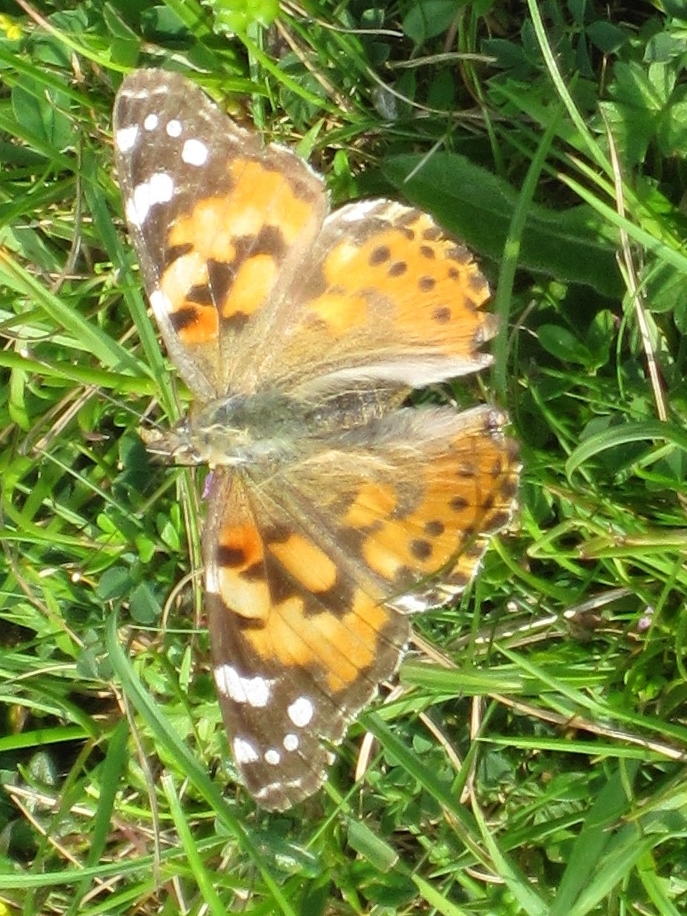 |
Peacock Aglais io
|
||
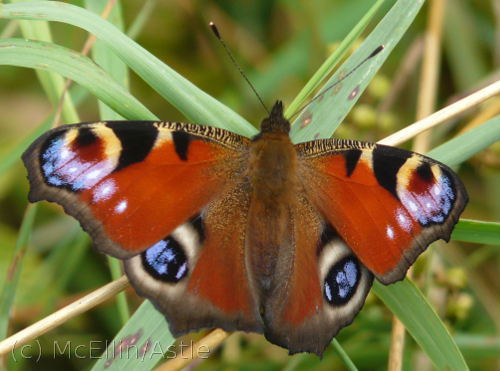 |
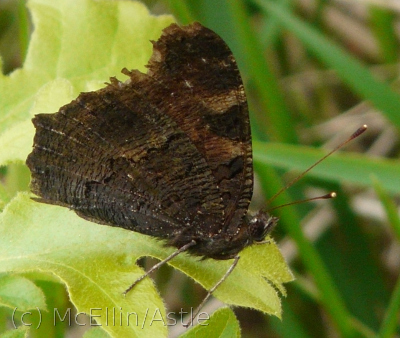 |
|
Small Tortoiseshell Aglais urticae
| This example was photographed on Bownham Common in April probably soon after emerging from hibernation. They have two broods each year, so can been seen almost anywhere up until September, when they are feeding up to prepare for over-wintering. | 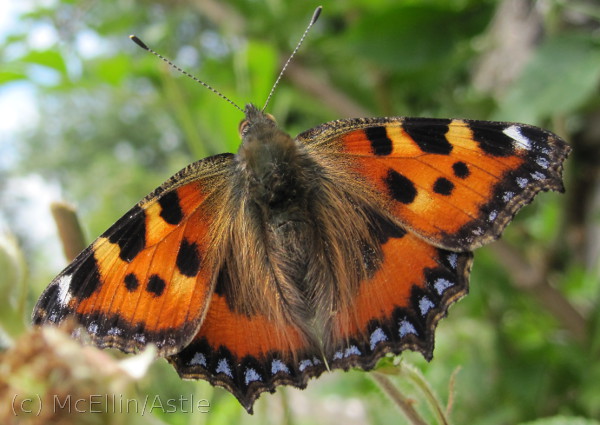 |
Riodinidae
Duke of Burgundy Hamearis lucina
|
This is sometimes called the "Duke of Burgundy Fritillary" (e.g. on the National Trust information board outside Winstone's Ice cream factor) but it is quite a different family from the fritillaries. The Duke can be found on two of our local commons, Rodborough and Bownham Common (Swell's Hill). Peak time for seeing the Duke is the middle of May. They roost in shrubs and trees, which indicates the type of habitat in which they can be found. Take care if you go looking for the Dukes! They are quite rare and too much tramping over the ground can damage the habitat. |
|
|
Skippers
Dingy Skipper Erynnis tages
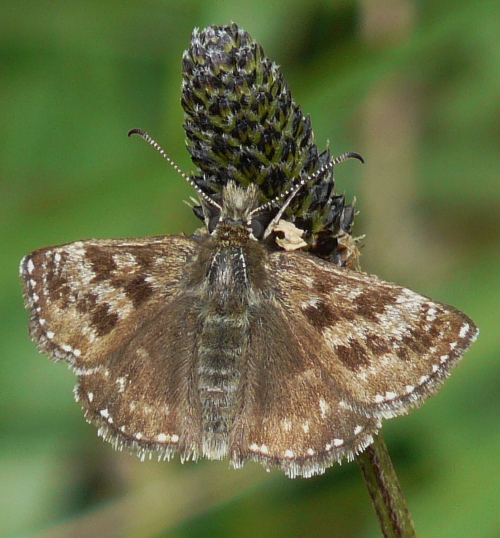 |
Grizzled Skipper Pyrgus malvae
| This was photographed at Daneway Banks. This is a local nature reserve worth visiting, which is also the site at which the Large Blue was introduced. It is best visited by parking at Sapperton and walking down past the entrance to the old canal tunnel. |  |
Large Skipper Ochlodes sylvanus
|
Photographed in Siccaridge Wood, close to Daneway Banks. This is not easy to distinguish from the Small Skipper. (You have to look at subtle details like the colour of the tips of the antennae and the position and size of sex marks on the wings of the males.) They should be slightly earlier than the Small Skipper (June onward) and this is in agreement with the dates associated with the photographs on this website. |
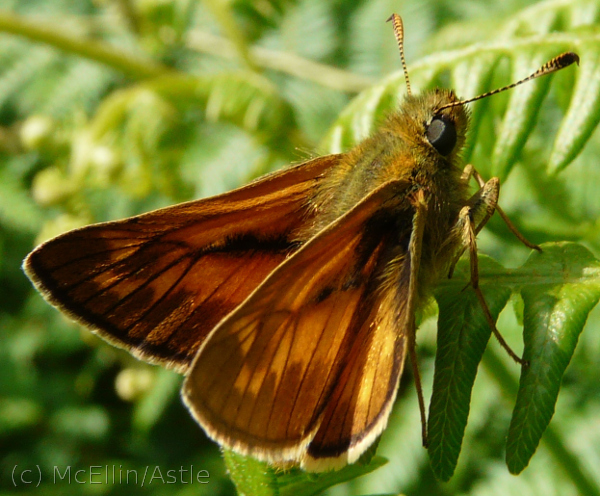 |
Small Skipper Thymelicus sylvestris
| These have often been encountered on Bownham Common, typically in July. | 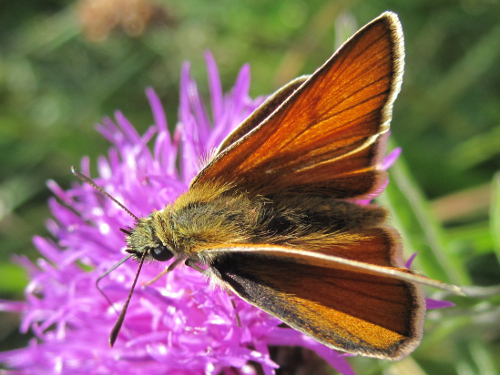 |
Whites
Green-veined White Pieris Napi
| This tends to be a species of woodland and damp grassland. (This example was photographed in Woodchester Park.) Unless you see the underside of the wing they might be mistaken for Small Whites. | 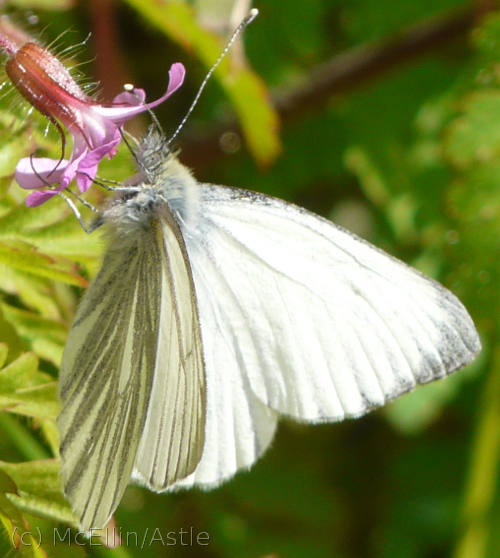 |
Orange Tip Anthocharis cardamines
|
This is a male photographed in Woodchester Park. The females do not have the orange tips and can be mistaken for whites. You need to see the underside of the wing to confirm identification of the females, however, all of our photographs show them resting with wings open and the underside not visible. These do not overwinter as adults, so can be taken as a genuine sign of Spring. |
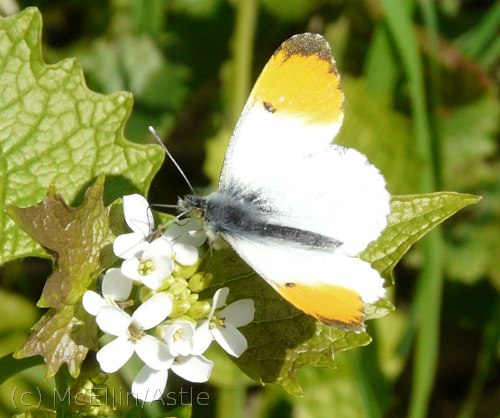 |
To Do - Seen and photographed locally, but have not yet edited photos for inclusion here - watch this space
- Small white - Siccaridge
- Brimstone - Woodchester Park
- Pearl-bordered Fritillary, Hailey Woods
Awaiting local photographs
- Red Admiral
- Comma



